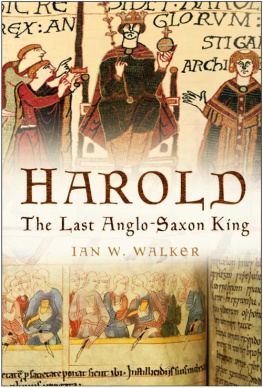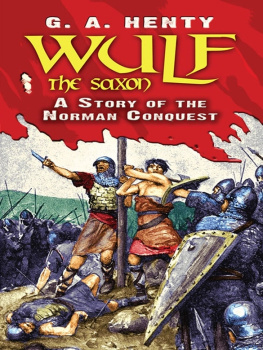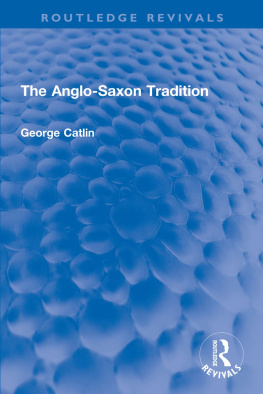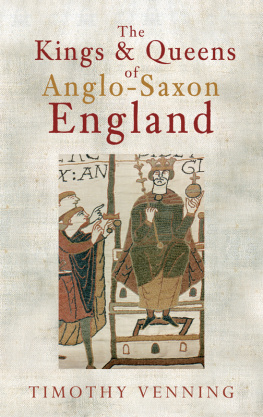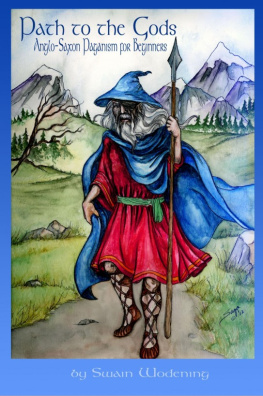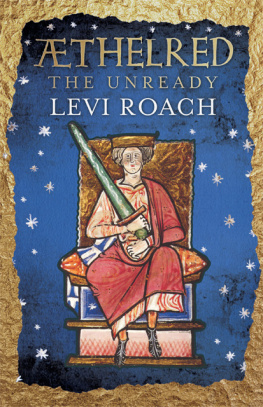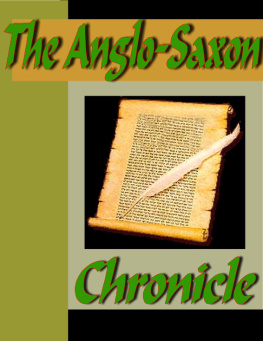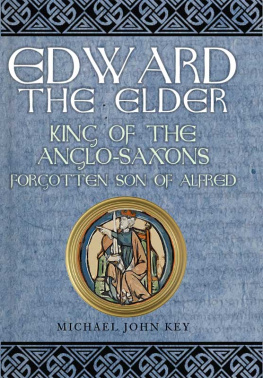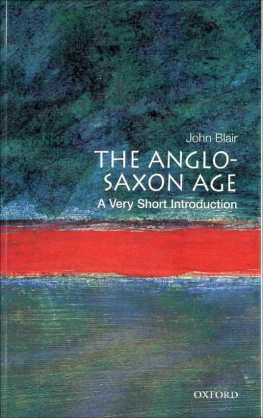Ian W. Walker - Harold: The Last Anglo-Saxon King
Here you can read online Ian W. Walker - Harold: The Last Anglo-Saxon King full text of the book (entire story) in english for free. Download pdf and epub, get meaning, cover and reviews about this ebook. year: 2011, publisher: The History Press, genre: Religion. Description of the work, (preface) as well as reviews are available. Best literature library LitArk.com created for fans of good reading and offers a wide selection of genres:
Romance novel
Science fiction
Adventure
Detective
Science
History
Home and family
Prose
Art
Politics
Computer
Non-fiction
Religion
Business
Children
Humor
Choose a favorite category and find really read worthwhile books. Enjoy immersion in the world of imagination, feel the emotions of the characters or learn something new for yourself, make an fascinating discovery.
- Book:Harold: The Last Anglo-Saxon King
- Author:
- Publisher:The History Press
- Genre:
- Year:2011
- Rating:4 / 5
- Favourites:Add to favourites
- Your mark:
- 80
- 1
- 2
- 3
- 4
- 5
Harold: The Last Anglo-Saxon King: summary, description and annotation
We offer to read an annotation, description, summary or preface (depends on what the author of the book "Harold: The Last Anglo-Saxon King" wrote himself). If you haven't found the necessary information about the book — write in the comments, we will try to find it.
Harold: The Last Anglo-Saxon King — read online for free the complete book (whole text) full work
Below is the text of the book, divided by pages. System saving the place of the last page read, allows you to conveniently read the book "Harold: The Last Anglo-Saxon King" online for free, without having to search again every time where you left off. Put a bookmark, and you can go to the page where you finished reading at any time.
Font size:
Interval:
Bookmark:

First published in 1997
This edition published in 2010
The History Press
The Mill, Brimscombe Port
Stroud, Gloucestershire, GL 5 2 QG
www.thehistorypress.co.uk
This ebook edition first published in 2011
All rights reserved
Ian W. Walker, 1997, 2000, 2004, 2010
The right of Ian W. Walker, to be identified as the Author of this work has been asserted in accordance with the Copyrights, Designs and Patents Act 1988 .
This ebook is copyright material and must not be copied, reproduced, transferred, distributed, leased, licensed or publicly performed or used in any way except as specifically permitted in writing by the publishers, as allowed under the terms and conditions under which it was purchased or as strictly permitted by applicable copyright law. Any unauthorised distribution or use of this text may be a direct infringement of the authors and publishers rights, and those responsible may be liable in law accordingly.
EPUB ISBN 978 0 7524 6826 6
MOBI ISBN 978 0 7524 6827 3
Original typesetting by The History Press
I would like to thank a number of people for their assistance during the writing of this book. I would like in particular to thank Sheila. She inspired and encouraged me to write this book in the first place. I would like to pay tribute to my tutors at the University of Glasgow, who fostered my interest in history and provided me with the investigative skills necessary to study the subject. I would like to express my appreciation to Denis Butler, whose admittedly somewhat romantic account of Harold Godwineson in 1066 The Story of a Year (London, 1966) nevertheless first attracted my attention to this fascinating character, and provided a starting point for many years of interesting research thereafter. I would like to express my gratitude to the staffs at Glasgow University Library, Edinburgh University Library, the National Library of Scotland, Edinburgh, the Library of the University of Wales, Cardiff, and East Kilbride Public Library, who provided access to many of the sources consulted, and to the staffs of all those various organizations which supplied illustrations and provided the necessary permissions to reproduce them herein. I would like to express my warm appreciation to Jane and Clare and the rest of the staff at Sutton Publishing, who succeeded in making the process of publication almost entirely painless. I would also like to thank Dr Bill Aird of the University of Wales, Cardiff, who read this work at an earlier stage and offered encouraging advice and helpful suggestions. This improved the final text immensely and saved me from a number of errors and omissions. I must accept full blame for any mistakes which remain in the finished book. Finally, I would like to thank my father and mother, without whose assistance on the word processor and in type-checking this book could not have been completed.
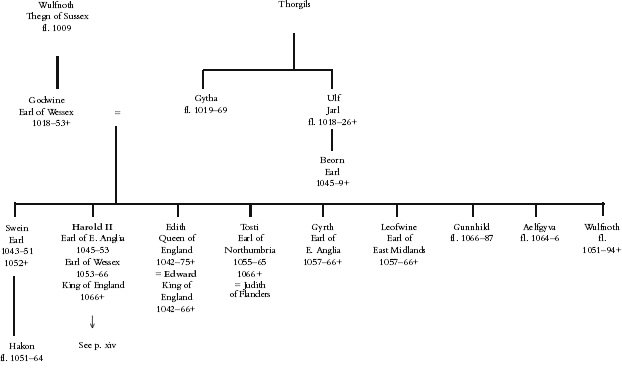
The Godwine Family

King Harold and his Descendants
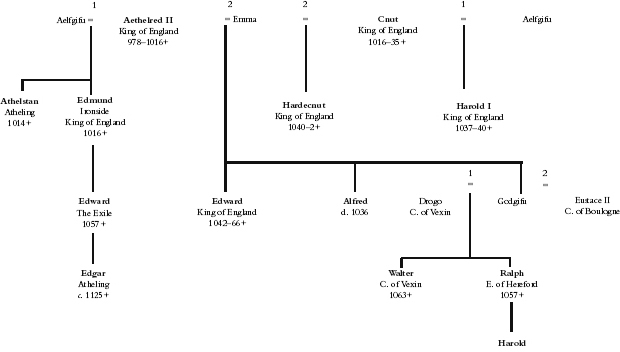
The English Succession 101666(Names in bold signify a claim to the throne)
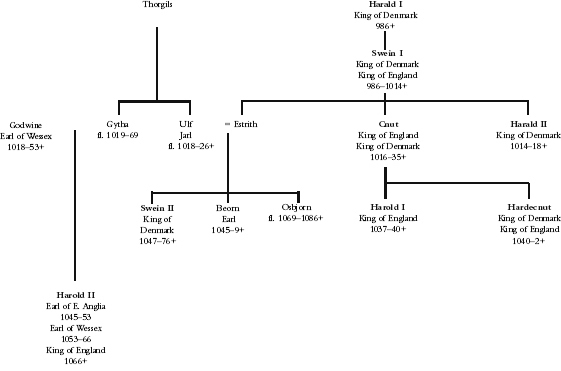
King Harold and his Scandinavian Connections
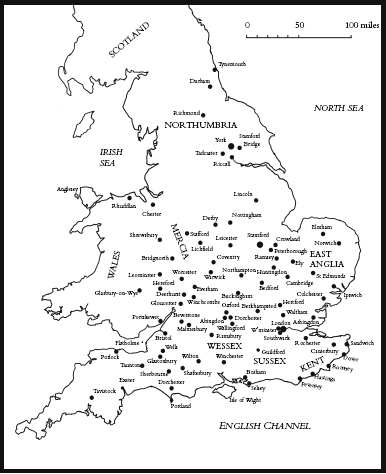
Map of England, c. 1060. ( Ian W. Walker)

Map of north-west Europe, c. 1060. ( Ian W. Walker)
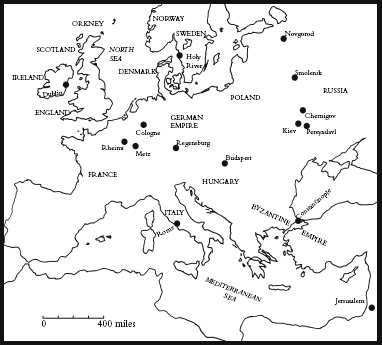
Map of Europe, c.1060. ( Ian W. Walker)
K ing Harold Godwineson is one of historys shadowy figures, almost unknown to the public at large. The few who are familiar with his name at all, usually know little more than that he lost the battle of Hastings and was killed by an arrow in the eye. Many general histories of England begin with the Norman Conquest and those which look back, beyond it, to the Anglo-Saxon period usually pass over Harold as a minor interruption between the long reigns of Edward the Confessor and William the Conqueror. This obscurity is partly, it is certain, a result of King Harolds brief reign of only nine months and nine days, almost the shortest in English history. Nevertheless, he reigned at a crucial turning-point in that history and played a vital role in the events of the memorable year 1066. As a result one would expect him to have received rather more attention than he has received.1
Only two modern works have dealt with Harolds career in any detail: a biography of 1961, and a commemorative lecture of 1966. Only the latter sought to examine Harolds career in a critical fashion. Otherwise, discussion of Harold has been largely confined to a number of academic essays on specific aspects of his career, or on his role as a supporting character in the careers of others. The former, by their nature, cannot consider his career in its entirety. The latter naturally tend to place him in an historical framework constructed with reference to the careers of others and as a result his own image is somewhat distorted. He has been portrayed as an over-mighty noble, who ruthlessly manipulated a weak King Edward the Confessor in order to oust his rivals, overshadow the king and ultimately seize the kingdom itself. He has also been seen as a man who rashly opposed Duke William of Normandy, Edwards designated successor, only to find himself outmatched as a statesman, as a general and as a propagandist, and paying the ultimate price for his folly.2
There is a need to consider Harold and his career in its proper context and to review his actions in this light. A full understanding of Harolds actions and their historical context in the years leading up to 1066 is a prerequisite for developing a complete perspective on his role in the events of that year. A number of recent historians have made a start but this book is intended to do so fully by focusing directly on Harold.3
In eleventh-century England, the monarchy was the focus of all political authority and the cornerstone of society. The king reigned by the Grace of God and his power over the people was divinely sanctioned. He provided leadership and protection for his people in time of war and dispensed justice and preserved order in time of peace. In order to perform these functions, he drew on tribute and taxation from his subjects. In practice, although royal power could ultimately be imposed by coercion this did not make it absolute. In fact, no king could successfully rule for long by force alone, especially if his subjects were united in their opposition to him. In most cases a significant degree of cooperation between ruler and subjects was usually required. A king could not be physically present throughout the kingdom and in order to operate beyond his immediate environs he required the cooperation of subordinates in each local area to act as his deputies, perform his duties, impose his authority, and collect his dues. These subordinates, who included both clergy and laymen, were royal civil servants, who gained rewards in return for their loyal service.
Font size:
Interval:
Bookmark:
Similar books «Harold: The Last Anglo-Saxon King»
Look at similar books to Harold: The Last Anglo-Saxon King. We have selected literature similar in name and meaning in the hope of providing readers with more options to find new, interesting, not yet read works.
Discussion, reviews of the book Harold: The Last Anglo-Saxon King and just readers' own opinions. Leave your comments, write what you think about the work, its meaning or the main characters. Specify what exactly you liked and what you didn't like, and why you think so.

